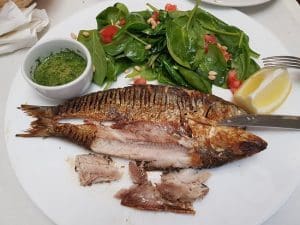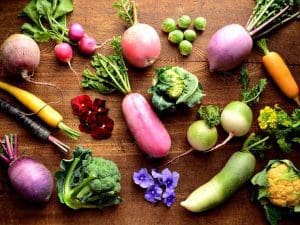
Hey there! In this article, we’re going to chat about really old, super yummy sea recipes. These are the kinds of dishes that our great-great-grandparents used to love, and guess what? We still love them today! So, get ready to sail back in time with us as we explore these amazing, hundred-year-old recipes from the sea. Let’s dive in!
Contents
The Story of Seafaring Food: A Trip Back in Time🐟
Hey, folks! Today, we’re going on an adventure into the history of seafood. We’ll see how it’s changed over the years and how people from different places and times added their own flavors to the mix. So, hop aboard our time machine, and let’s explore!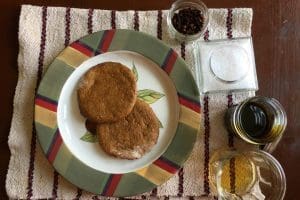
A Quick Look at the Past.
Imagine a long time ago when sailors sailed the big oceans. They had to eat, right? So, they came up with special ways to cook food on their boats. These ways have been passed down like a secret recipe from grandma to mom to us.
Old Cooking Tricks.
What’s cool is that some of these cooking tricks still work like magic. Think of making yummy stews on a boat, keeping fish fresh, and using special spices to make food taste awesome.
Flavors from All Over.
Here’s the fun part: seafaring food isn’t the same everywhere. It’s like trying food from different countries but on the water! People from different places brought their own yummy stuff to the table. So, we got spices from faraway lands and exciting new recipes.
For example, sailors from Portugal shared spices like paprika and saffron, which made food in Europe taste extra good. And when pirates cooked, they mixed flavors from Africa, the Caribbean, and Native America to make their meals super interesting.
Crucial Ingredients for Seafaring Delights.
Ahoy, culinary adventurers! In our quest for delectable seafaring dishes, we now turn our attention to the heart and soul of these timeless recipes—the essential ingredients that make them sing. Join us as we dive into the world of fishing and the art of crafting the Traditional Maritime Hodge Podge Recipe.
The Maritime Grocery List: Key Ingredients That Matter
When you’re preparing to cook up a storm on the high seas, it’s essential to know what goes into the pot. Here’s a treasure map of key ingredients often found in traditional seafaring recipes:
- Fresh Catch of the Day: Picture it—a bustling fishing dock, the salty breeze in the air, and fishermen hauling in their daily catches. This is where it all begins. Freshness is the name of the game when it comes to seafood. Whether it’s succulent shrimp, flaky cod, or plump mussels, the catch of the day is the star of the show.

- Sea-Salted Goodness: Ah, the ocean’s seasoning! Sea salt, harvested from the very waters that provide our ingredients, adds a unique depth of flavor to maritime dishes. Its coarse grains not only enhance taste but also evoke the briny essence of the sea.
- A Medley of Herbs and Spices: Just like the diverse regions that influence seafaring cuisine, a medley of herbs and spices brings complexity and character to these dishes. Think aromatic rosemary, zesty lemon zest, and the warmth of paprika—all combining to create unforgettable flavors.
- Roots and Veggies: To balance the richness of seafood, seafaring recipes often include vegetables like onions, carrots, and celery. These humble ingredients add a touch of sweetness and depth to the dish.

- Liquid Gold – Broths and Sauces: What’s a good maritime stew without a hearty broth or sauce? Broths made from simmering seafood scraps and aromatic vegetables infuse every bite with deliciousness. Tomato-based sauces or a splash of wine can elevate the dish to gourmet levels.
The Significance of Freshness from the Deep Blue
Now, let’s talk about why the freshness of seafood is the holy grail of seafaring cuisine. The ocean is the ultimate pantry for seafaring cooks, and the quality of the ingredients is paramount. Here’s why:
- Flavor Fusion: Fresh seafood bursts with natural flavors that elevate the entire dish. From delicate, sweet scallops to the briny richness of oysters, freshness enhances the taste adventure.
- Texture Matters: The texture of seafood can vary greatly depending on its freshness. A firm, succulent bite is what we’re after, and only fresh catches deliver that delightful mouthfeel.
- Safety First: Fresh seafood is safer to consume. The longer seafood sits, the greater the risk of spoilage. By choosing fresh ingredients, you’re not only ensuring tastier dishes but also healthier ones.
Iconic Seafaring Recipes.🐟
Hello, food enthusiasts! Today, we’re going to dig into the world of classic seafaring recipes that have been wowing taste buds for generations. Join us on this flavorful journey as we uncover the magic of centennial seafood dishes and more.
Centennial Classics: Recipes That Stand Strong Through Time
In the ever-evolving culinary landscape, some recipes are like old friends, always there to satisfy your cravings. Here are a few legendary centennial kitchen recipes that have passed the test of time:
Seafood Paella: Straight from the sunny shores of Spain, this dish is a colorful mix of saffron-infused rice, succulent shrimp, tender squid, and more. It’s a taste of the Mediterranean in every bite.
Basque-Style Cod (Bacalao a la Vizcaína): This hearty dish from the Basque Country features codfish in a rich tomato and red pepper sauce. It’s a perfect blend of flavors from both land and sea.
Bouillabaisse: Hailing from the beautiful ports of Provence, France, this fish stew is a fragrant medley of various fish, shellfish, and aromatic herbs. It’s a culinary masterpiece of centennial seafood cuisine.
Centennial Cake: Every meal needs a sweet ending, and this dessert has been gracing seafaring tables for ages. It’s a simple yet delightful treat with flavors like citrus, almonds, and a hint of rum.
Unveiling Culinary Secrets.🐟
Hello, culinary adventurers! As we continue our voyage through the world of centennial kitchen recipes and the art of fishing, we’ve arrived at a crucial destination—unveiling the secrets of preparation that make these recipes truly exceptional. Get ready to discover the techniques that set centennial seafood dishes apart and gain valuable tips for recreating authentic flavors at home.
Mastering the Art.
When it comes to creating centennial seafood masterpieces, the devil is in the details. Here are some techniques that make these recipes truly unique:
- Meticulous Seafood Selection: The foundation of any great seafood dish is, of course, the seafood itself. Centennial recipes often emphasize the importance of choosing the freshest catch available. When you’re at the market or fishmonger, look for bright eyes, firm flesh, and that unmistakable sea-fresh scent.
- Balancing Flavors: Achieving the perfect balance of flavors is key. Whether it’s the umami of seafood, the acidity of tomatoes, or the richness of olive oil, centennial kitchen recipes are all about harmonizing ingredients to create a symphony of taste.
- Layering and Timing: Many centennial seafood dishes involve layering ingredients and precise timing. For instance, when making a seafood stew, adding ingredients in a specific order ensures that each component is perfectly cooked.
- Use of Aromatics: Aromatics like garlic, onions, and fresh herbs play a significant role in centennial recipes. They infuse dishes with depth and fragrance, elevating the overall experience.
Tips for Authentic Home Cooking
Now that you know the techniques that define centennial kitchen recipes, let’s explore some tips for recreating these authentic flavors in the comfort of your own home:
- Start with Quality Ingredients: Just like the seafaring cooks of old, begin with the best ingredients you can find. Seek out fresh seafood, aromatic herbs, and quality olive oil.
- Don’t Rush: Centennial seafood dishes are often slow-cooked to perfection. Give your dishes the time they deserve to develop rich flavors. Low and slow is the way to go.
- Taste and Adjust: Throughout the cooking process, taste your dish and adjust seasonings as needed. This ensures that the final result matches your palate.
- Share the Experience: Centennial kitchen recipes often bring people together. Invite friends and family to enjoy the meal with you. The shared experience adds a special touch to the dining table.
Why Tradition Is Important.🐟
Hey there, food fans! Today, we’re talking about old-timey seafood recipes and why it’s super important to keep them going for a long, long time. Join us as we find out why these recipes are special and how they connect to the people who live by the sea.
Why Old Recipes Matter: Passing Down to Kids.
Imagine if one day, we couldn’t smell the yummy seafood stew cooking or taste the delicious seafood paella. That would be like losing a piece of our history. Here’s why it’s a big deal to keep these recipes around: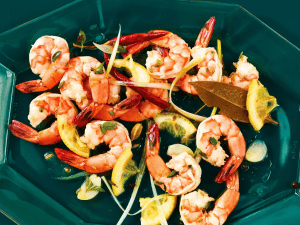
- Tasty History: These seafood recipes aren’t just food; they’re like time machines that tell stories about the past. They remind us of brave sailors and the cool way different foods mixed together. By keeping these recipes, we make sure those stories don’t get forgotten.
- Different Flavors: In a world where everything is fast and easy, these old recipes show us how cool it is to have lots of different flavors and ways to cook. It’s like having a bunch of yummy secrets from our grandparents.
- Passing the Yum: Just like our grandparents shared these recipes with us, it’s our job to teach them to our little brothers and sisters. That way, the tradition keeps going, and we can enjoy these tasty dishes when we grow up too.
Why People by the Sea Love These Recipes.
Now, let’s talk about why people who live by the sea really love these old recipes: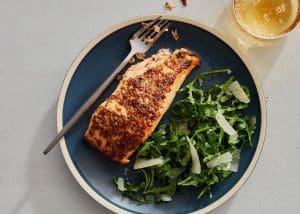
- Bringing Folks Together: In many seaside towns, food isn’t just about eating; it’s about being together with friends and family. Whether it’s a big family dinner or a fun seafood festival, these recipes make people feel close.
- Helping the Town: Cooking and eating these old recipes can also help the people who catch seafood for a living. It’s like saying thanks to them for their hard work and keeping their way of life going.
- Keeping Traditions Alive: These recipes remind people who live by the sea of where they come from and what makes their town special. It’s like a tasty way of showing off their seaside roots.

